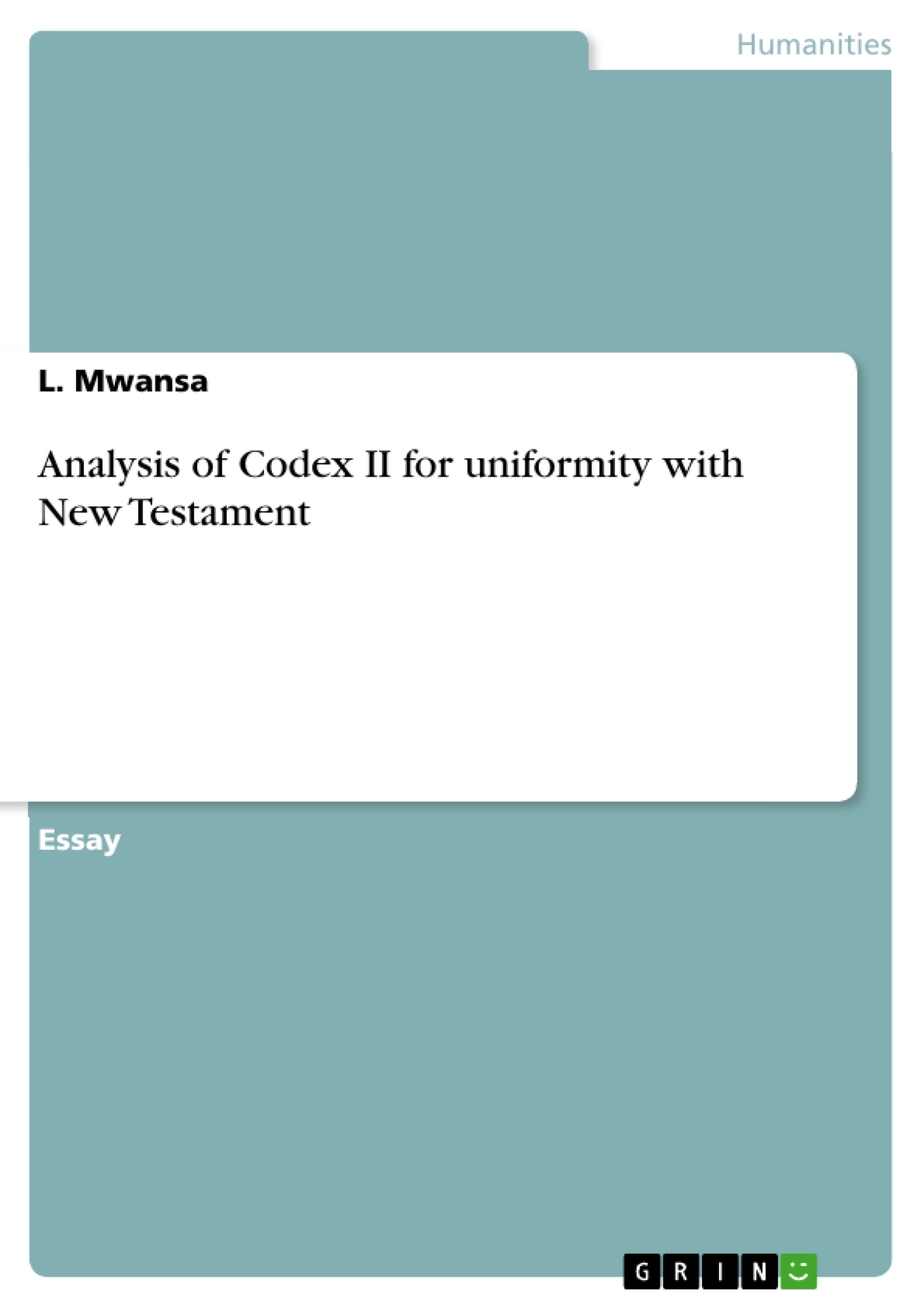In this essay, I have endeavored to analyze possible uniformity and discrepancies between Gnosis texts and the New Testament. C.W. King states that the term "Gnosticism" is derived from the Greek word, Gnosis, knowledge, a word specially employed from the first dawn of religious inquiry to designate the science of things divine. According to Sean, the Gnostics themselves kept no official histories. It was simply not of interest to them to document how and why their philosophy began, the main focus of their teaching being gnosis. Scholars are therefore still debating the origins of Gnosticism. It is traditionally thought to be a form of Christianity that flourished in the first centuries, and that is certainly the impression one gets from reading the Church Fathers. In fact, it is a slightly misleading assumption, as Gnosticism probably had its roots in or at least was influenced by Jewish Pagan and Iranian traditions that predate Christianity. While recognizing that the Church of the mid second century still depended on verbal tradition of the apostles, Irenaeus realizes that the Gnostics have meddled with the “unadulterated truth” of apostolic tradition. He appeals to the preservation of true tradition entrusted to the “succession of bishops” and “presbyters” instituted by the apostles throughout the Church “everywhere” in this crisis of authority.
Inhaltsverzeichnis (Table of Contents)
- Analysis of Codex II for uniformity with New Testament
- Apocryphon of John
- The Gospel of John
- The Book of Thomas
Zielsetzung und Themenschwerpunkte (Objectives and Key Themes)
This research paper aims to analyze the possible uniformity and discrepancies between Gnostic texts, specifically the Apocryphon of John and the Book of Thomas, and the New Testament, particularly the Gospel of John.
- The origins and nature of Gnosticism
- The relationship between Gnostic texts and the New Testament
- The interpretation of biblical texts in Gnostic writings
- The role of light imagery and theological dialogues in Gnostic texts
- The significance of the figure of Jesus Christ in Gnostic texts
Zusammenfassung der Kapitel (Chapter Summaries)
- The first chapter explores the origins and nature of Gnosticism, examining its relationship to Jewish, Pagan, and Iranian traditions. It also discusses the debate about the authenticity of Gnostic texts and the importance of understanding their historical context.
- The second chapter delves into the Apocryphon of John, analyzing its central themes, its relationship to the Gospel of John, and its use of biblical imagery and theological dialogues. It highlights the importance of understanding the text's original form and its potential influence by Jewish traditions.
- The third chapter focuses on the Book of Thomas, its possible origins, and its relationship to the broader Gnostic tradition. It explores the significance of the dialogue between Jesus and his twin brother Jude, the role of Thomas as the "beloved disciple," and the impact of the book's teachings on its intended audience.
Schlüsselwörter (Keywords)
This research paper focuses on the following keywords and concepts: Gnosticism, New Testament, Apocryphon of John, Book of Thomas, Gospel of John, Johannine literature, biblical interpretation, light imagery, theological dialogues, Jesus Christ, origins of Gnosticism, Jewish traditions, Gnostic texts, historical context, authenticity of Gnostic texts, syncretism, deity, transcendence, salvation, evil, apocalyptic structure, redaction, polymorphy, demiurge, temple imagery, exegetical methods, beloved disciple, hidden sayings, ascetic community, ideal community, lost masses, impure.
- Quote paper
- Dr. L. Mwansa (Author), 2023, Analysis of Codex II for uniformity with New Testament, Munich, GRIN Verlag, https://www.hausarbeiten.de/document/1382504


